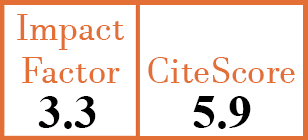Full Papers
Application of vascular index based on superb microvascular imaging technique for assessing disease activity in rheumatoid arthritis patients with signal-positive joints
Y. Song1, J. Ma2, T. Chu3, M. Wu4, X. Zhang5, H. Zhu6
- Zhengzhou University People’s Hospital, Zhengzhou, and Department of Ultrasound, Henan Provincial People’s Hospital, Zhengzhou, China.
- Zhengzhou University People’s Hospital, Zhengzhou, and Department of Ultrasound, Henan Provincial People’s Hospital, Zhengzhou, China.
- Department of Rheumatology and Immunology, Henan Provincial People’ s Hospital, Zhengzhou, China.
- Department of Ultrasound, Henan Provincial People’s Hospital, Zhengzhou, China.
- Zhengzhou University People’s Hospital, Zhengzhou, and Department of Ultrasound, Henan Provincial People’s Hospital, Zhengzhou, China.
- Zhengzhou University People’s Hospital, Zhengzhou, and Department of Ultrasound, Henan Provincial People’s Hospital, Zhengzhou, China. 15343067093@163.com
CER18375
2025 Vol.43, N°9
PI 1554, PF 1560
Full Papers
Free to view
(click on article PDF icon to read the article)
PMID: 40314989 [PubMed]
Received: 25/11/2024
Accepted : 10/03/2025
In Press: 01/05/2025
Published: 18/09/2025
Abstract
OBJECTIVES:
To explore the value of the vascular index (VI) based on superb microvascular imaging (SMI) technique in assessing rheumatoid arthritis (RA) disease activity.
METHODS:
The study involved 119 RA patients who underwent SMI examinations of 28 joints. Observers obtained the VI values by manually drawing the area of interest and calculating the sum of the VI values for each patient to obtain the VIsum, and then dividing the VIsum by the number of signal-positive joints to obtain the VIstand. Data of patients’ 28-joint Disease Activity Score (DAS28) and laboratory tests were also collected. The relationship between VI parameters and clinical indexes as well as the differences of VI parameters among groups with different disease activity were investigated. Moreover, the cut-off values of VI parameters to identify RA patients with DAS28 <2.6/DAS28 ≤3.2 were calculated using the receiver operating characteristic (ROC) curves.
RESULTS:
VIsum, VIstand correlated with clinical and laboratory indicators, especially with DAS28 (r=0.740, 0.659, respectively, p<0.05). The differences of VIsum and VIstand among the 4 groups of patients were statistically significant (p<0.05). VIsum had higher diagnostic efficacy than VIstand for identifying patients in remission or in low and below activity. With a VIsum cut-off value of 35.5/47.8, the area under the ROC curve for identifying DAS28 <2.6/DAS28 ≤3.2 was 0.872/0.846.
CONCLUSIONS:
As a quantitative indicator to assess synovitis activity of RA patients, SMI-based VI was helpful in assessing RA disease activity.


